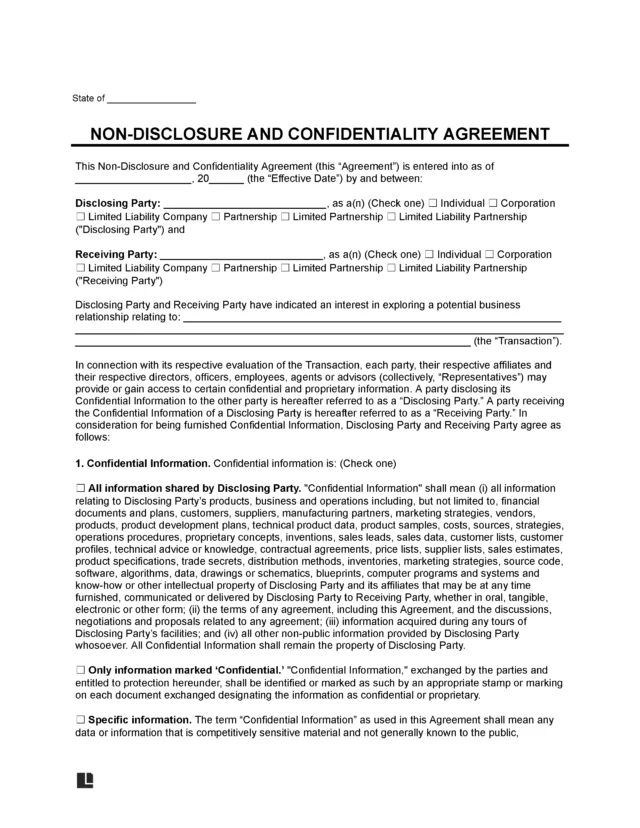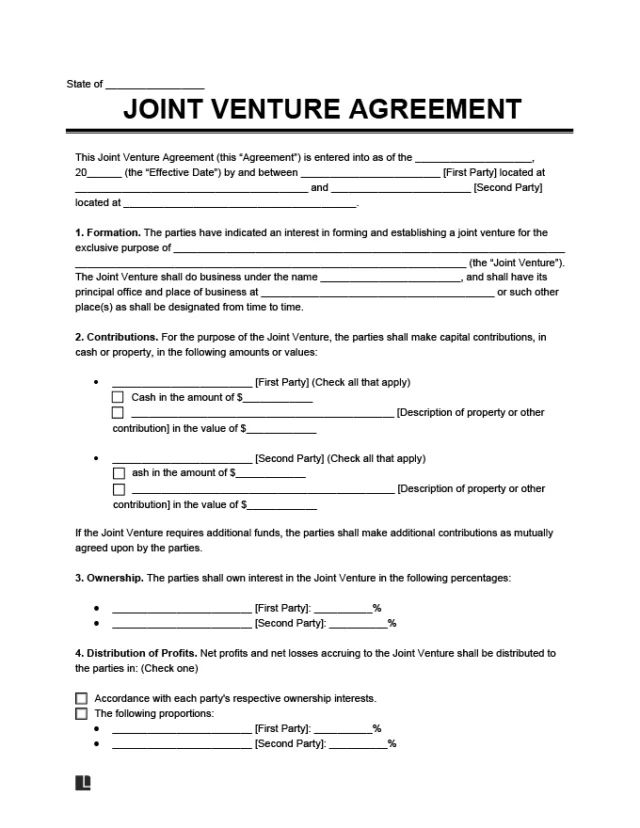What Is a Business Asset Purchase Agreement?
A business asset purchase agreement is a contract for buying specific assets rather than the entire company. It gives the buyer the ability to take only the assets they want and leave anything that isn’t part of the deal. Depending on the transaction, the agreement can cover a single asset or most of the business.
It explains which assets transfer, the purchase price, and the terms for closing the sale. A business asset purchase agreement also separates purchased assets from excluded ones and makes clear which liabilities, if any, that the buyer will take on. The seller provides representations about the business and its assets, and the agreement includes rules for how each side handles losses if a breach occurs. Many agreements also add non-compete or non-solicit terms to protect the buyer after closing.
If you need a simple document to transfer a whole business instead of selected assets, use a business bill of sale.
Asset Purchase vs Stock Purchase
An asset purchase lets the buyer take selected assets while the seller keeps ownership of the original company. The buyer chooses what they want, avoids unwanted debts and liabilities, and leaves the legal entity with the seller, even if most operations move to the buyer. This is the scenario the template is built for.
A stock purchase works differently. The buyer acquires the company’s shares, which means all assets, contracts, and liabilities transfer with the ownership. Stock purchases are used for full ownership transfers and fall outside the scope of this template.
In short, an asset purchase offers more control over what moves from the seller to the buyer. A stock purchase creates a complete handover of the business. The right choice depends on how much of the company the parties intend to transfer.
For a deeper look at how business ownership transfers work, read our guide on transferring business ownership.
When to Use a Business Asset Purchase Agreement
A business asset purchase agreement is often used when buyers and sellers want tighter control over the sale, including when:
- The buyer wants specific assets instead of taking ownership of the entire company.
- The deal covers only certain assets or even substantially all assets without transferring the legal entity.
- Both sides need clear terms for what’s being sold and the conditions for the transfer.
This setup gives the buyer more control and helps the seller draw clear lines around what stays behind. It makes the transfer easier to manage for everyone involved.
What Assets and Liabilities Can Be Included?
A business asset purchase agreement can include the assets the buyer chooses to take, as long as they can be transferred. These assets can be listed in the agreement or in an attached exhibit, and they often cover items such as:
- Equipment and machinery
- Inventory
- Intellectual property
- Business licenses
Anything marked as an excluded asset stays with the seller. The same structure applies to liabilities, since the buyer only assumes the obligations they agree to. Any excluded liabilities, including old debts, taxes, or claims, remain with the seller. This approach keeps the transfer clear by showing exactly what moves to the buyer and what stays with the original company.
What Assets Can’t Be Included?
Some items can’t move over in an asset purchase because they aren’t assignable. They stay with the seller unless both sides get the permissions needed. Common examples include:
- Licenses tied to the seller personally
- Permits that require a new application
- Contracts that need third-party consent and don’t get approved
These limits explain why certain items have to stay with the original company and why separate approvals or reissuance are required before they can transfer.
If a contract needs third-party approval before it can transfer, you may need a separate assignment agreement once consent is granted.
What Happens to Assets That Aren’t Purchased?
Excluded assets and liabilities stay with the seller. After closing, the seller usually winds down or dissolves the old company once any remaining obligations tied to those items are handled. The buyer continues with only the assets listed in the agreement.
What to Include in a Business Asset Purchase Agreement
A business asset purchase agreement needs clear terms so both sides know exactly how the transfer will work. You can understand these terms by looking at the key questions the agreement needs to answer.
- What assets are being transferred? The agreement should describe the assets being sold. It should also note any items the seller will keep and state which liabilities the buyer will take on, such as vendor agreements or equipment leases tied to those assets.
- How is the purchase price structured? The agreement must list the total purchase price, any deposit, and how the price is allocated across equipment, inventory, and goodwill. It should also cover permits, licenses, or customer agreements connected to the assets.
- What conditions need to be met before closing? Some deals require steps before closing, such as financing approval, landlord consent, or assignment approvals for key contracts.;
- What protections does the agreement provide? The agreement should list each party’s warranties, covering ownership, authority to sell, financial accuracy, and the absence of undisclosed liens. It can also include a non-compete or non-solicitation clause to protect the buyer’s interests. The dispute method and governing law should be stated as well.
Along with the effective dates and names of both buyer and seller, these terms form the core of a business asset purchase agreement, and give both sides a clear record of the deal.
Sample Business Asset Purchase Agreement
Here’s a sample business asset purchase agreement so you can see what the final document looks like. When you’re ready, you can customize the template and download it in Word or PDF.







